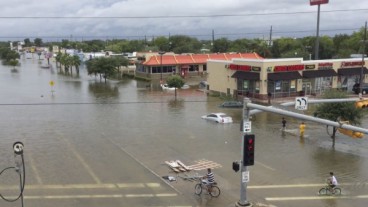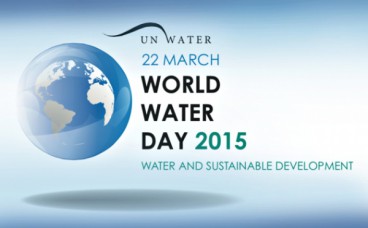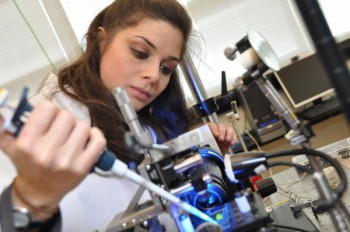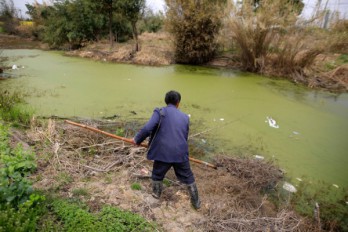A method to deal with urban storm flooding

Researchers from MIT claim that engineered green spaces can capture and purify water from storms contributing in flooding problem treatment.
Due to climate change, weather conditions have altered and large quantities of rain water can cause severe problems to cities. New strategies need to evolve in order to deal with this issue. Engineers and urban planners at MIT have developed a method which includes urban stormwater wetlands and ponds that integrate the management and cleaning of rain water with ecological advantages. Today, stormwater is transported by urban infrastructure, mostly by underground pipelines, as the natural ecosystems have been replaced by human constructions (roads, pavements and buildings among others). Thus, the capacity of an area to absorb the rainwater has been significantly reduced keeping the water in the surface of the ground. There, it picks pollutants, trash, heavy metals and chemicals that can be carried into the local water supply.
The researchers have published their study with the hope to awake local communities persuading them to adopt another approach. The guidelines they propose are based on physical experiments undertaken in the MIT Nepf Environmental Fluid Mechanics Lab and recently published in the journal Ecological Engineering. Alan M. Berger, co-author, the Norman B. and Muriel Leventhal Professor of Advanced Urbanism and LCAU co-director states: "The goal of our study is to help cities mitigate their own problems in the face of rapidly changing climates, large storms, and a lack of economically feasible solutions."
To investigate the capability of the method, two specific case studies were picked (Houston and Los Angeles). Both are large cities in warm climates, rapidly growing, mostly suburban, with good prospects for green space however, one is dry and one very wet. This way the project's adaptability can be tested. The guidelines combine engineering, urban planning, and landscape architecture expertise to design a versatile green space. On top of managing stormwater, the wetland or pond creates greenery for the city, recreational space for the community, and valuable wildlife habitats. The project has not yet started but pilot wetland systems will be established soon.
Thirty different wetland system designs were developed by researchers in the Environmental Fluid Mechanics Lab led by Heidi Nepf, the MIT Donald and Martha Harleman Professor of Civil and Environmental Engineering. Water circulation through sculpted models was monitored in order to determine the most effective topography in slowing down the rainwater and distributing evenly its flow to create the processes that cleanse the water naturally. Collaboration between engineers and urban planners led to a design that maximized efficiency without sacrificing aesthetic, ecological, or recreational quality.
The addition of recreational features to these projects is critical. Communities unaware of the extent to which stormwater pollutes their water supply may not support using a space that could be a park or a playground for such a project. Therefore, recreational features make artificial wetlands an easier sell.
Source: Mit.edu
Source: Mit.edu
Want to read more like this story?

Ancient engineering methods to address water shortages
Jul, 31, 2019 | NewsAccording to a new study, published in Nature Journal, a 1,400-year-old system of canals that divert...

Urban floods: A major issue in the U.S.
Dec, 10, 2018 | NewsFloods triggered by intense storms cause major problems in urban environments. New research (full...

March 22nd is World Water Day!
Mar, 22, 2015 | NewsSince 1993, the United Nations has designated March 22nd of each year as World Water Day, a day dedi...

Rain gardens in NY City to eliminate the overflows during intense precipitation events
Nov, 15, 2017 | NewsNew York City, like other older urban communities, is largely serviced by a combined sewer system wh...

Thames Water Accelerates Plans to Secure South East's Future Water Supply
Jun, 07, 2024 | NewsToday marks a significant step in securing the future water supply for the South East as Thames Wat...

Researchers have developed a miniaturized water quality sensor that can monitor drinking water quality in real time
Oct, 03, 2017 | NewsThis tiny and inexpensive device -built using a 3D printer- can be deployed anywhere in the water di...

Dubai’s $8B Flood Defense Plan: Engineering a Resilient Future
Jul, 12, 2024 | NewsExpanding Capacity with Traditional Approaches In response to April’s unprecedented storm that inu...

The Devastating Impact and Solutions to Flooding in Brazil
May, 20, 2024 | NewsThe recent catastrophic flooding in Rio Grande do Sul, Brazil, has brought widespread devastation a...

More than 80% of underground water in China is heavily polluted
Apr, 12, 2017 | NewsIndustrial pollution and farming has rendered it unsuitable for human use Industrial pollution an...
Trending

Vertical gardens in Mexico City to combat pollution

Characteristics of Load Bearing Masonry Construction

Taipei 101’s impressive tuned mass damper

Saudi Park Closed After 360 Big Pendulum Ride Crashes to Ground, 23 injured

Dutch greenhouses have revolutionized modern farming

Federal court rules Biden’s offshore drilling ban unlawful


